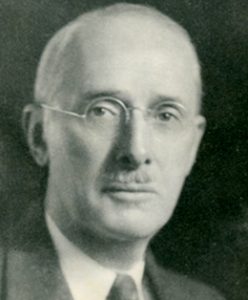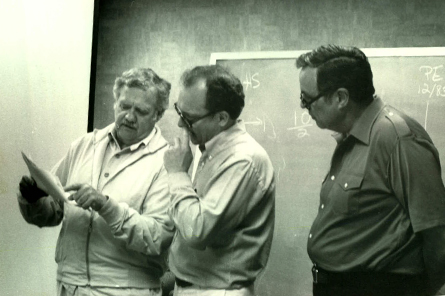Leadership
Starting with Emil Lorch and Emery Stanford Hall, NCARB has had many extraordinary leaders who have guided the organization through everything from the Great Depression to major technology shifts to preparing for the next century.
Leadership Structure
Early Leadership
At the initial meeting in 1919, the small group of representatives from 13 jurisdictions selected Michigan architect Emil Lorch to serve as chairman and Illinois architect Emery Stanford Hall as secretary to get the organization off the ground. Lorch, a professor at the University of Michigan, had previously helped found the Association of Collegiate Schools of Architecture (ACSA) a few years earlier. Hall volunteered to have the organization run out of his office—where it would remain for almost 20 years.

“From time to time there appears a worthy field of activity which for vitalization largely depends on its conjunction with the right individual. This was peculiarly true of NCARB and Emery Stanford Hall.”
The Growing Board
In its early years, the Council was guided by an Executive Committee of six architects from its Member jurisdictions. While Hall (with the help of a secretary) would manage the day-to-day operations, the other members volunteered to track licensing requirements among the states with registration laws and create recommended exam syllabuses for states to use when developing their registration examinations.

The Executive Committee remained mostly unchanged until 1958, when it added three at-large directors to create a larger Board of Directors. NCARB also changed the role of the secretary, which had been serving as a staff leader in charge of overseeing the organization’s daily needs, to a more traditional officer role. A new executive director would take on managing the growing staff and Council Record process.
The Board of Directors grew again 10 years later in 1968, to include a director from each of the recently formed regions to provide geographical diversity to its leadership. The Board grew again in 2008, when public member and Member Board Executive directors were added.

As representatives of all of NCARB’s constituencies, the Board of Directors makes decisions concerning the exam and experience program with the help of recommendations from its committees and comments from Member Boards. Changes to the NCARB Certificate, Model Law, Model Regulations, Model Rules of Conduct, and the organization’s Bylaws are put forth by the Board for a vote of the membership.
Setting the Vision
As NCARB’s membership and volunteer base grew, the Board of Directors changed from being heavily involved in the day-to-day workings of the organization to setting the strategic vision. With key initiatives usually spanning several years, presidents and executives have worked together to ensure continuity.

“Rather than rest on past accomplishments, [we must] continue working with renewed vigor. We have a strong foundation in [our membership], but we must not be afraid of change.”

NCARB Presidents
In its first 100 years, NCARB has had 80 presidents guide it through getting off the ground, economic hardship, and development of national programs for licensure.

NCARB Executives
Led by both architects and non-architects over its 100 years, NCARB executives oversee the staff and the implementation of programs and services for Member Boards, architects, and licensure candidates.






